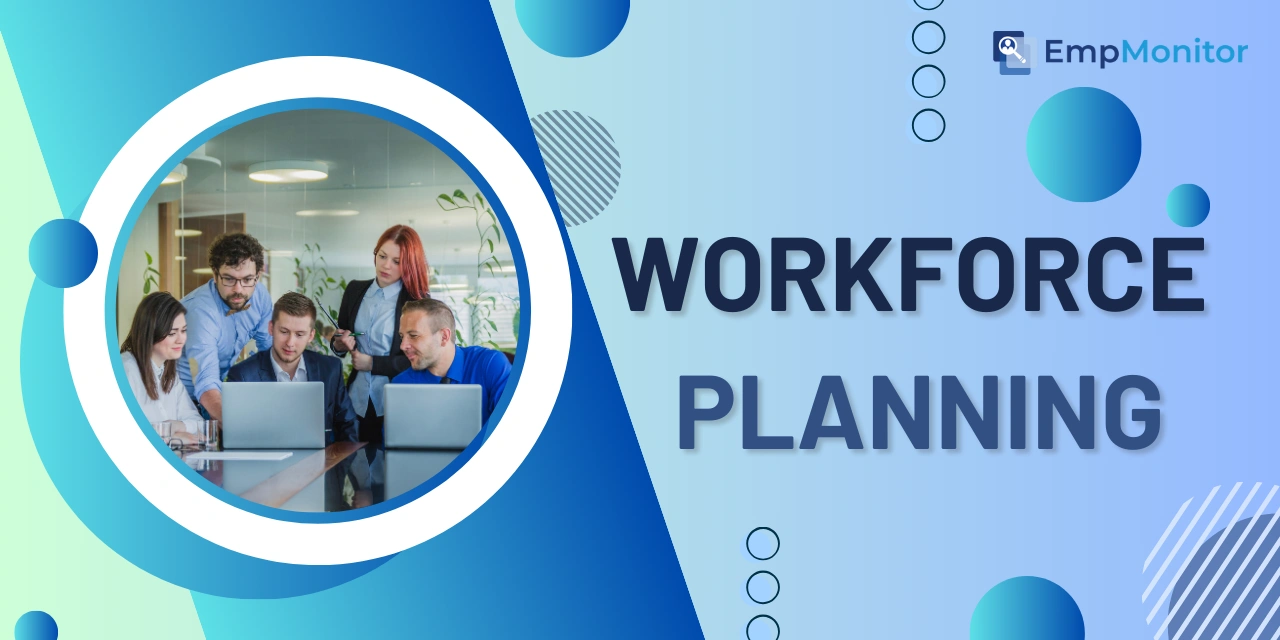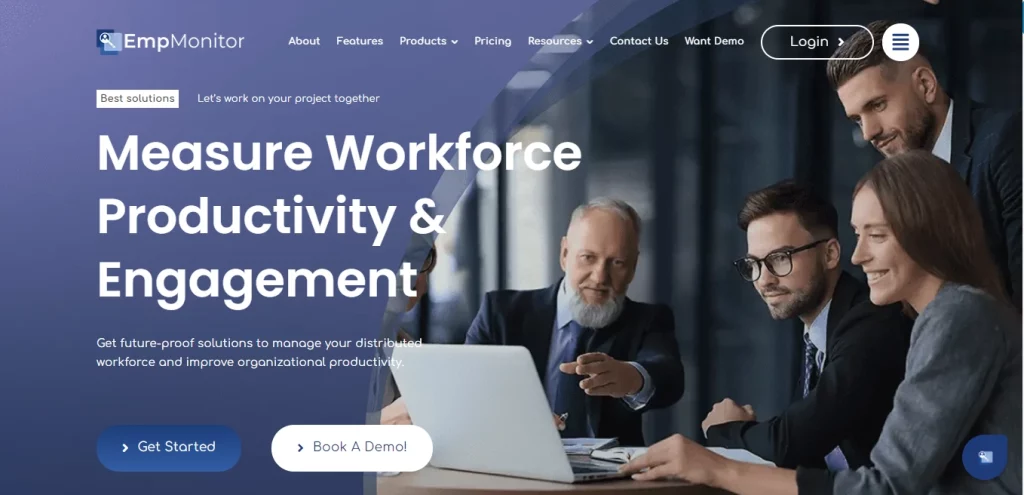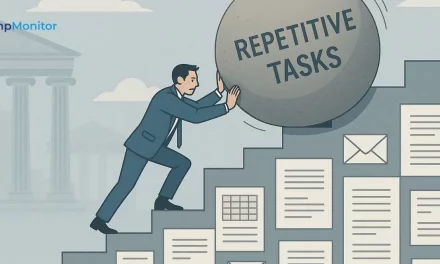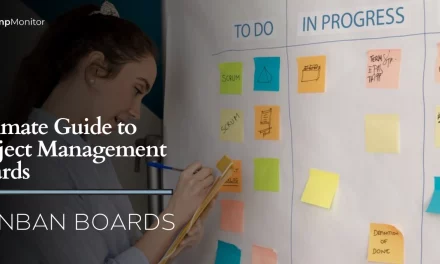Workforce planning isn’t just about filling seats or matching headcounts; it’s also about predicting how work dynamics will change in the future. With the proper model, you can manage your workforce efficiently and strategically aligned with your business objectives.
Focusing on workforce organization and optimization is essential because it ensures you have the right people in the right roles at the appropriate times.
In this blog, we’ll help business owners and HR leaders grasp the essential steps of workforce planning, including analyzing your current team, workforce forecasting, and developing strategies to meet those needs.
But what is it, and why is it important? It is vital to understand these before delving deeper into the steps of workforce optimization and planning.
In a hurry? Listen to the blog instead!
What Is Workforce Planning?
Workforce planning is a structured process within a company that focuses on looking ahead to prevent too many or too few employees. Businesses can operate more efficiently by predicting their future staffing needs and the actual number of available employees.
This process includes examining, predicting, and planning how many workers an organization will require. Identifying gaps and determining the best way to manage employees are vital elements of the business.
The primary goal is to ensure that the organization has the optimal number of members and possesses the necessary skills in the appropriate roles at the optimal times to achieve its goals.
Importance Of Workforce Planning:
Workforce planning can reveal challenges or goals that may be difficult to achieve and offer ways to address them to safeguard strategic plans.
It helps reduce labor expenses by managing the workforce efficiently, adapting to evolving customer demands, and ensuring that a business is well-prepared for success.
Some of its benefits are:
- Evaluating Workforce Gaps
- Reduce Recruitment Expenses
- Identifying The Gaps In Talent
- Improving The Recruitment Process
Having learned about its meaning and importance, let us understand its essential steps.
Steps Of Workforce Planning
By adopting a strategic workforce planning method, companies can effectively predict and adapt to changes, giving them a competitive edge in attracting and retaining top employees.
The six steps businesses should follow to make their workforce more efficient are:
Strategic Guidance Or Direction:
During this stage, the organization lays down the groundwork to match its workforce strategy with its business goals and objectives for planning its workforce. Ensuring that personnel planning aligns with the company’s overall objective is vital.
Setting clear goals and Key Performance Indicators (KPIs) at this strategic stage is vital for tracking progress and ensuring alignment with organizational objectives.
When these objectives and KPIs are defined, the workforce optimization process becomes quantifiable, targeted, and aligned with the organization’s larger strategic goals. It establishes a framework for ongoing assessment and modification, which helps businesses effectively respond to internal and external changes.
Analysis Of Available Resources:
After that, you’ll need to perform a conventional supply and demand study, which starts with looking at your labor supply.
You need to understand your workforce to understand their skills and strengths. You can do it by analyzing the labor supply. The aim is to see if your employees can handle current and future business needs.
A comprehensive supply analysis involves inspecting employee demographics, skills, performance, distribution, and engagement levels. Understanding factors like age, gender, and diversity aids in anticipating future changes.
Assessing skills ensures critical competencies are present. Evaluating performance identifies high-potential employees. Analyzing workforce distribution reveals staffing imbalances. Examining employee engagement and satisfaction levels predicts retention rates that may also impact the overall productivity and profitability of the business.
Analysis Of Demand:
In this stage, we’re focusing on the need for employees. Demand analysis involves projecting the jobs, abilities, and number of personnel required to meet organizational goals.
This process involves examining industry trends, technological advancements, and market needs. The goal is to anticipate future staffing requirements and keep the organization competitive.
The essential elements of workforce planning include:
- Predicting the necessary roles and skills required for the organization
- Determining the appropriate number of employees needed to fulfill those roles
- Evaluating the current skill levels of the existing workforce
- Preparing for various potential future scenarios and planning accordingly
By understanding future workforce demands, organizations can strategically plan for recruitment, training, and retention to ensure success.
Gap Assessment:
Now, let’s combine these two analyses to identify what’s lacking. Organizations can identify skills, positions, or employee numbers disparity by comparing their current workforce to their future needs.
Workforce planning and analytics help determine the necessary actions required to prepare for future workforce demands. Gap analysis is where your workforce plan starts taking form.
The types of gaps you should be looking for are:
- Skill deficiencies
- Role discrepancies
- Staffing shortages
- Developmental disparities
In workforce planning, gap analysis is an invaluable tool that provides a clear plan of action for strategic HR initiatives that will guarantee the organization’s ability to address upcoming opportunities and problems.
Implementation Of Solutions:
Once you’ve pinpointed areas needing improvement, it’s time to devise a plan to address them. Solution implementation blends strategic planning with practical execution. While strategies get implemented through recruitment, training, and other HR processes, careful management is still necessary to properly satisfy the organization’s talent requirements.
Here’s one of many workforce planning examples aimed at a vital objective: retention of employees.
Business Goal:
Over the next year, the goal is to reduce voluntary turnover and increase employee tenure. You can achieve it by enhancing career development, boosting job satisfaction, and creating a welcoming work environment to encourage employee retention.
Plan To Boost Employee Retention:
Introduce a mentorship initiative to enhance employee retention. Pairing experienced staff with newcomers fosters growth, support, and a sense of belonging, contributing to longer employee tenures and increased satisfaction within the company.
Goal:
Build a supportive atmosphere and share knowledge.
Steps:
- Pair experienced workers with newer ones.
- Teach mentors how to support effectively.
- Set clear aims for mentorship, like skill growth and career guidance.
- Check salary and perks.
Goal:
Guarantee competitive pay packages.
Steps:
- Compare what we pay to industry standards.
- Find areas to improve, like health benefits or bonuses.
- Make changes and explain them clearly.
- Offer chances for career growth.
Goal:
Give obvious career paths and skills development.
Steps:
- Plan out career routes for different jobs.
- Provide training and support for education.
- Have regular talks about career plans.
This example outlines specific steps to create a more engaging work environment through targeted initiatives. While it’s just a snapshot, it provides a solid starting point for workforce planning efforts.
Tracking Progress:
Now that you have a well-established plan- begin overseeing your advancement.
Workforce planning is a continual effort. Companies must consistently monitor their initiatives, assess their effectiveness, and adjust their plans as needed in response to new data or shifts in the overarching business strategy.
Here’s how you can achieve that efficiently.
Also Read:
05 Best Strategies For Implementing Successful Workforce Planning
Workforce Planning And Analytics: Why It Is Helpful?
What Is Reskilling And Why Is It Important For Your Future?
7 Unique Ways To Build A Future-Ready Workforce
Human Resource Planning: Everything You Need to Know!
How To Track Your Progress:
Seek Feedback:
Regularly ask for input from employees, managers, and other stakeholders to ensure that team planning benefits everyone. Set up methods to collect feedback on your strategies and their impact.
Adjustments And Improvements:
Make the required adjustments to your team’s planning strategy based on input and evaluations of Key Performance Indicators (KPIs).
Documentation And Reporting:
Keep thorough records of your monitoring process, findings, and any changes you make. Share these reports regularly with senior management and key stakeholders to ensure transparency and support for your ongoing workforce planning efforts.
Foster Open Communication:
Cultivate a culture of open communication and feedback within your organization. Encourage employees to share their thoughts and ideas at every stage, not just during the initial planning phase.
Utilize Technology:
Capitalize on technology solutions to automate data collection and analysis, making workforce management more efficient. Workforce management solutions like EmpMonitor make management of the workforce efficient and easy. With its array of tools, the software can enable you to track your team’s progress and manage your organization effectively.
Let us learn about this software briefly.
EmpMonitor- Empowering Your Business With Smarter Workforce Planning
EmpMonitor is the best software that offers managers many beneficial features to help in workforce management effectively through effective workforce planning tips.
It gathers and examines large volumes of data from multiple channels, including employee actions, productivity rates, and task durations. Using sophisticated analytical algorithms, it offers a valuable understanding of employee actions, trends in performance, and resource distribution.
So, how does it support your business in creating a successful workforce strategy? With the insights provided by EmpMonitor, organizations can pinpoint areas for enhancement, streamline operations, and use data-driven strategies to boost productivity and effectiveness.
Some of its beneficial features are:
Employee Activity Monitoring:
Understand how your employees use websites and other applications to enhance productivity.
Time Tracking:
Monitor the time employees spend working by tracking their work time.
Performance Tracking:
Track employee performance using criteria like project completion rates.
Productivity Monitoring:
Ensure your employees achieve productivity targets by monitoring their work output.
Data-Driven Decision Making:
EmpMonitor data enables informed decisions, enhancing efficiency and effectiveness across workforce levels.
Compliance And Security:
Ensure compliance with regulations and security protocols by monitoring employee activities in a non-intrusive and secure manner, safeguarding sensitive data and information.
Conclusion:
Strategic workforce planning is an essential component of any successful business. By understanding the steps outlined in this guide, businesses can align their workforce with their goals.
EmpMonitor emerges as valuable workforce productivity and engagement software in this process, offering features that enable data-driven decision-making and streamline workforce management. Organizations may optimize their personnel, increase productivity, and achieve long-term success by continuous evaluation and adjustments.
With the right strategies and tools, businesses can navigate challenges, adapt to changes, and thrive in today’s dynamic business environment.



















